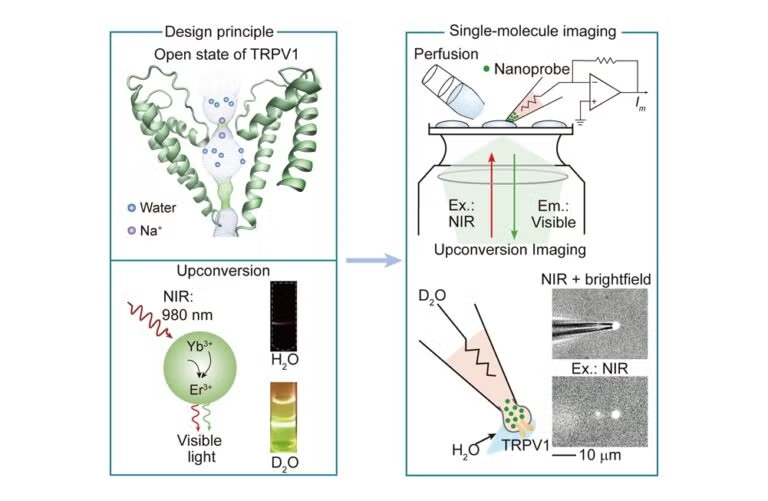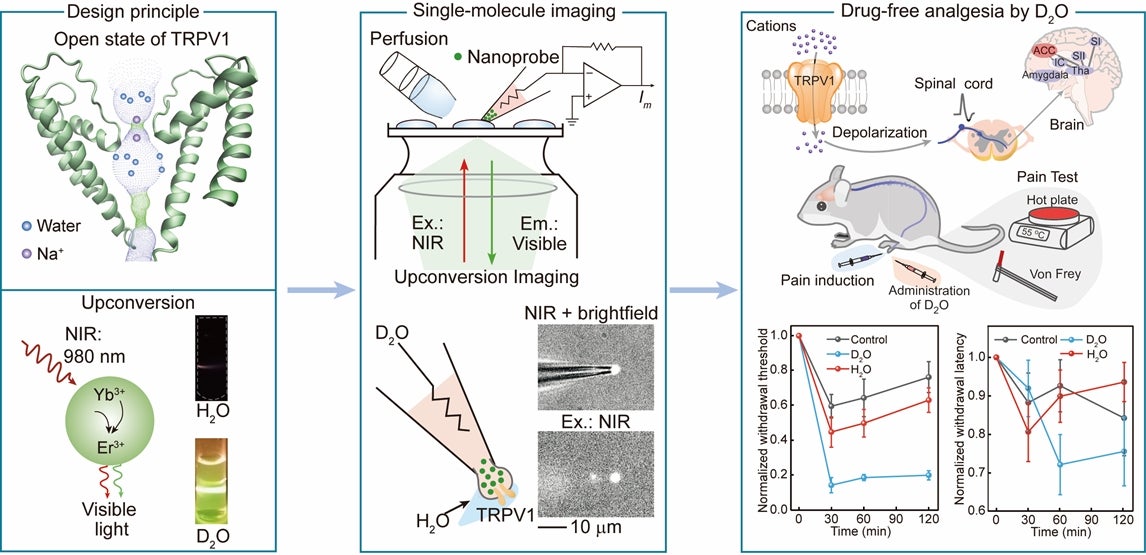
The research team led by Professor LIU Xiaogang from the Department of Chemistry at NUS developed an upconversion nanoprobe capable of distinguishing between ordinary water (H₂O) and deuterated water (D₂O). This advanced technology enabled real-time tracking of water dynamics at both the single-cell and single-molecule levels. The study showed that when D₂O passed through the TRPV1 channel, it suppressed pain signal transmission and achieved effective analgesia. This research was conducted in collaboration with Professor Chao CHANG from Peking University and National Innovation Institute of Defense Technology, China, and also with Assistant Professor Bilin ZHUANG when she was with Yale-NUS College.
Administering D₂O to pre-clinical models, the team successfully reduced both acute and chronic inflammatory pain transmission without affecting other neurological responses. This solvent-mediated analgesia mechanism provides an effective, biocompatible, and non-addictive alternative to traditional pain medications, circumventing issues related to drug dependency and tolerance. Prof Liu said, “This discovery not only expands the scientific understanding of TRPV1 functionality but also opens new avenues for pain management. The research team aims to further explore the effects of D₂O on other ion channels, potentially applying this mechanism to treat neurological conditions and other medical challenges.” He added, “The solvent-mediated analgesia mechanism represents an innovative breakthrough in pain relief, potentially driving the development of safer, non-addictive pain therapies for clinical use.” The findings were published in the journal Nature Biomedical Engineering. Read the full article here.
 The figure describes the design principle, single-molecule imaging platform, and tests for deuterated water (D2O)-mediated drug-free analgesia. [Credit: Nature Biomedical Engineering]
The figure describes the design principle, single-molecule imaging platform, and tests for deuterated water (D2O)-mediated drug-free analgesia. [Credit: Nature Biomedical Engineering]
